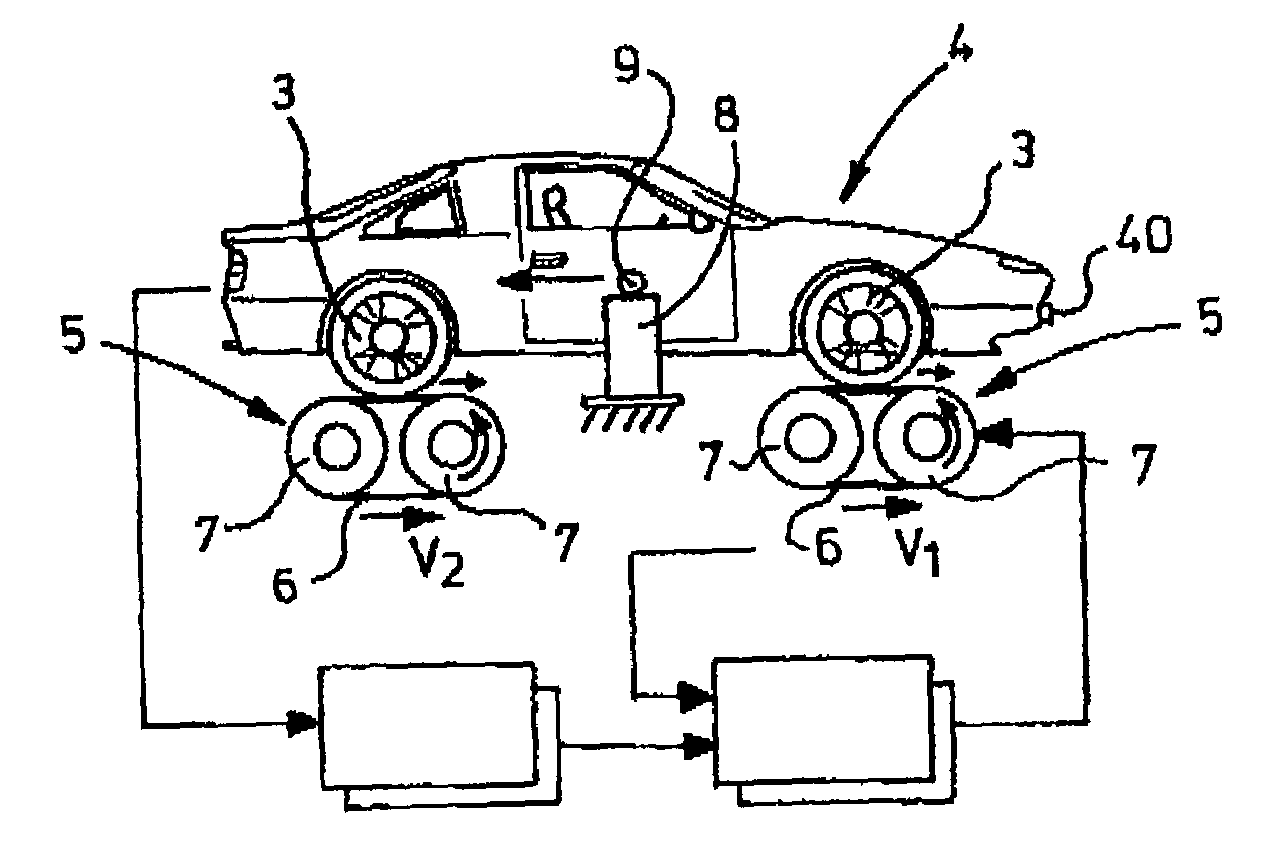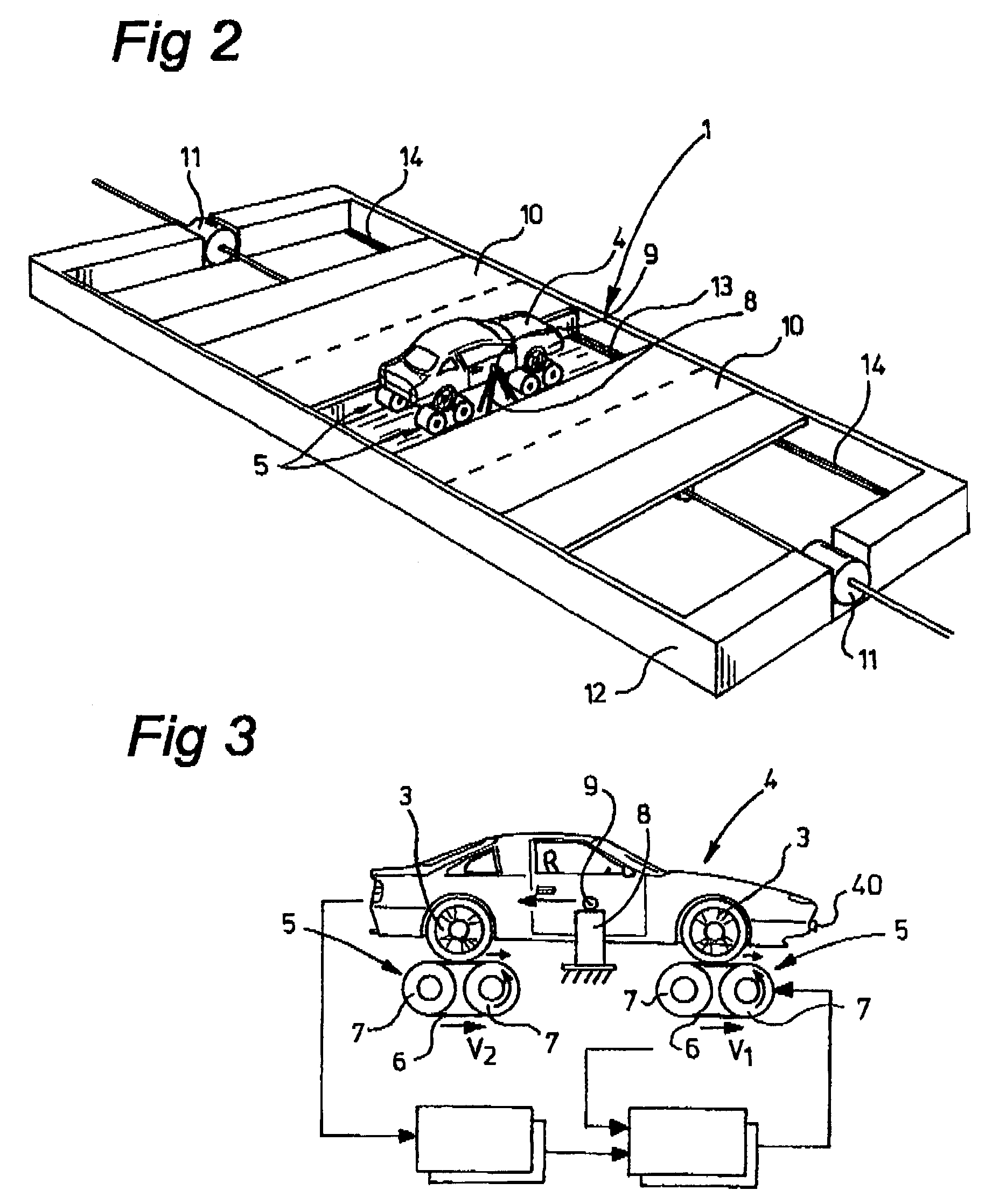System for performing tests on intelligent road vehicles
a technology for intelligent road vehicles and vehicle tests, applied in the direction of gyroscopes/turn-sensitive devices, liquid/fluent solid measurement, speed measurement using gyroscopic effects, etc., can solve the problems of limiting the growth of the road network, increasing the number of vehicles, and reducing so as to avoid the risks of high speed and reduce the absolute speed of vehicles and objects.
- Summary
- Abstract
- Description
- Claims
- Application Information
AI Technical Summary
Benefits of technology
Problems solved by technology
Method used
Image
Examples
Embodiment Construction
[0034]The embodiment of the system according to the invention which is illustrated in FIG. 1–4 comprises a test stand, which is denoted overall by 1, and a mobile undercarriage 2. Only the wheels 3 of the vehicle situated on the test stand 1 are shown. The vehicle 4 is illustrated in its entirety in FIGS. 2 and 3.
[0035]The test stand 1 comprises four benches 5 with endless belts 6 which are each wound around the drivable rolls 7. The vehicle 4 is attached to the horizontal transverse shaft 9 by means of a yoke 8. Consequently, the vehicle can execute rotary movements (pitch movements) about this transverse shaft 9 on the test stand 1. As shown in FIG. 1, the front wheels of the vehicle are steerable.
[0036]The test stand 1 is delimited on both sides by a driving surface or road surface 10. These road surfaces 10 and the test stand 1 can be displaced independently of one another in the lateral direction by means of dedicated spindles 11, as shown in FIG. 2. These spindles 11 are mount...
PUM
 Login to View More
Login to View More Abstract
Description
Claims
Application Information
 Login to View More
Login to View More - R&D
- Intellectual Property
- Life Sciences
- Materials
- Tech Scout
- Unparalleled Data Quality
- Higher Quality Content
- 60% Fewer Hallucinations
Browse by: Latest US Patents, China's latest patents, Technical Efficacy Thesaurus, Application Domain, Technology Topic, Popular Technical Reports.
© 2025 PatSnap. All rights reserved.Legal|Privacy policy|Modern Slavery Act Transparency Statement|Sitemap|About US| Contact US: help@patsnap.com



